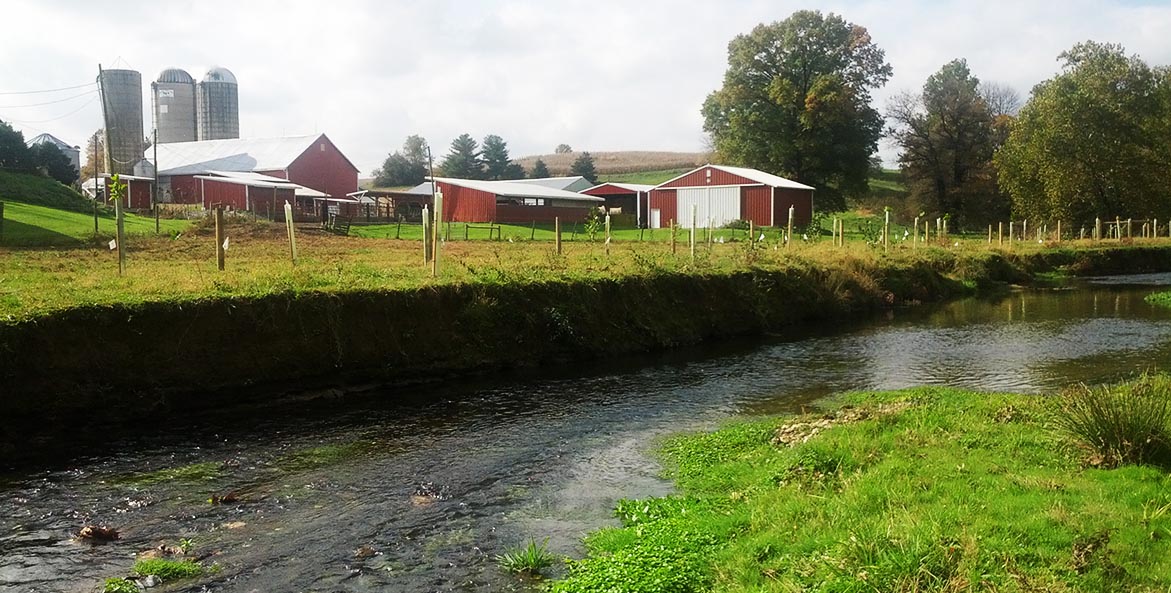The Maryland Agricultural Water Quality Cost-Share Program (MACS), authorized in 1982, is administered by the Maryland Department of Agriculture through local soil conservation districts. MACS is funded through the Chesapeake Bay Restoration Fund (BRF) and the Chesapeake and Atlantic Coastal Bays 2010 Trust Fund (Trust Fund).
How Maryland's Cost-Share Program Works
Maryland's soil conservation districts work with farmers to evaluate their farms, design best management practices, and submit projects for state approval. Payments are made only after the project is complete.
MACS helps farmers offset the cost of 32 eligible conservation practices. For structural practices, such as riparian buffers, stream fencing, and waste storage facilities, the program provides grants that cover between 65 and 87.5 percent of the cost. Cost-share payments are capped at $150,000 per farm per year, except for animal waste storage projects, which are capped at $300,000 per farm. For management practices, such as planting cover crops, farmers are typically paid a per-acre rate.
Funding for the cost-share program has been consistent at a rate of more than $20 million each year over the past decade, but much of that money goes to support practices that need to be repeated year after year.
For example, in 2018, 80 percent of the MACS payments funded annual farming practices, including cover crops, manure transport, and manure injection. An additional 15 percent went to waste storage and the protection of heavy use areas, and 3 percent funded grassed waterways. Only 2 percent of the funding available supported permanent practices that have long-term benefits, such as planting forest and grass buffers between crops and waterways, converting croplands to pasture, keeping farm animals from polluting streams, and restoring wetlands.
Why Agricultural Cost-Share is Important to Meeting Maryland's Blueprint Goals
Maryland reduced the amount of agricultural nitrogen pollution it sends to the Chesapeake Bay by 1.6 million pounds between 2010 and 2018. To meet its Clean Water Blueprint goals, the state must reduce an additional 4.2 million pounds of nitrogen from agriculture by 2025—accounting for approximately 52 percent of its total remaining reductions.
Trees, wetlands, and grass pastures limit Bay pollutants including nitrogen, phosphorus, and sediment from running off farm fields during and after rain events. The natural filters also help build healthy soils by keeping the plant nutrients on the land, rather than allowing them to flow into the Bay. Adding more natural filters to Maryland's agricultural landscape will help the state reach its 2025 Chesapeake Bay cleanup goals and cement the nitrogen reductions the state has worked hard to achieve through wastewater plant upgrades and annual cover crops.



